Aside from crazy driving, food scandals and cancer-causing chemical pollution, what else could you possibly have to worry about living in South China? The answer: several extraordinary members of the animal kingdom.
Below we’ve rounded up seven of South China’s most dangerous creatures – although we’d like to note that most encounters are unlikely to result in bodily harm.
In fact, humans are far more of a danger to these creatures than they are to us. So, before you squash that centipede under your shoe, remember that you have a better chance of getting squashed by a rogue taxi than dying from bug venom.
1. Chinese Bird Spider

Image via @adamandtheeightleggedbeauties/Instagram
Credited with being one of the most venomous spiders in China, this is not an animal you want to encounter while stomping through the bush.
A hyper aggressive species of Old-World tarantula, the Chinese bird spider captures its prey by emerging unexpectedly from dirt burrows to attack and poison its victims. Despite its name, the spider predominantly preys on insects and small rodents, which are dispatched quickly by the species’ strong venom.
The Chinese bird spider is found throughout southern China and parts of Vietnam.
If you are unfortunate enough to have one of these large, eight-legged predators poke its fangs into you, make haste to the nearest hospital – or prepare for severe nerve damage.
2. Chinese Cobra
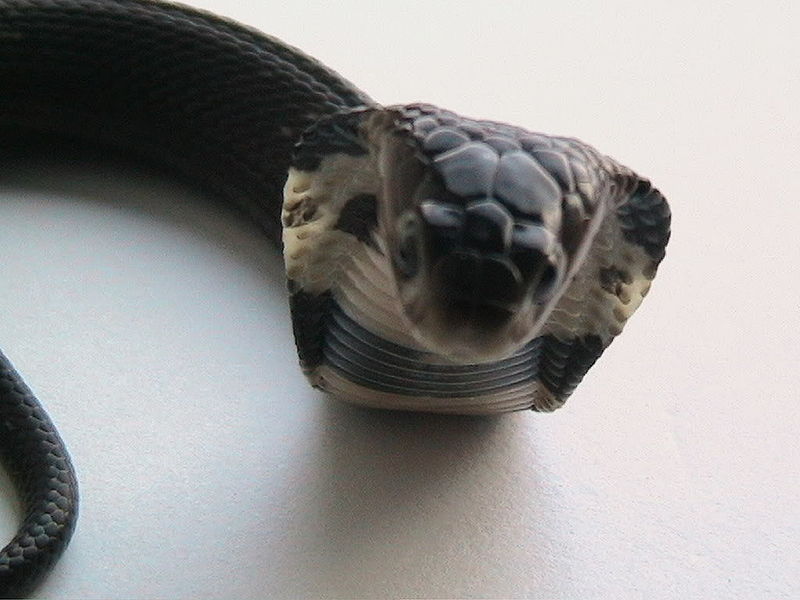
Image via Wikimedia
Being attacked by a Chinese cobra is not something you want to experience.
If bitten, you could expect a darkening of the bite wound, swelling, pain, blisters and necrosis, as well as slightly more minor (but also shitty) issues such as a sore throat, fever and lockjaw. Ultimately, a bite from a Chinese cobra could prove fatal.
Chinese cobras are found in South China, Hong Kong, Taiwan and parts of northern Laos and Vietnam, according to A Field Guide to the Venomous Land Snakes of Hong Kong.
Since it's considered a vulnerable species (in terms of known numbers), your chances of running into a Chinese cobra are relatively slim (particularly if your daily routine sees you walking from home to work and back). That being said, between 1904 and 1938 there were 593 recorded cases of envenomation in Taiwan, with 87 fatal cases – a 15 percent mortality rate.
Mortality rates are much lower than before, but a nonfatal bite would still suck.
READ MORE: Woman Bitten by Severed Cobra Head in South China
3. Chinese Red Head Centipede
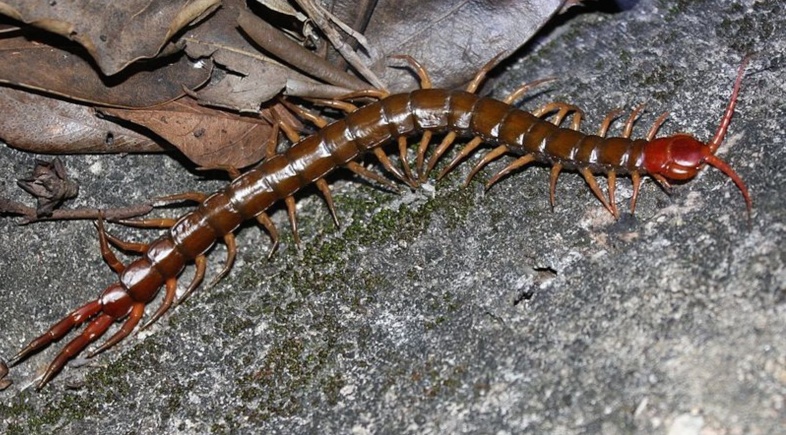
Image via Wikimedia
If this large and aggressive species of centipede cozies up to your skin, prepare for extreme pain, severe swelling, fever and general weakness, according Dr. Robert Norris, professor of surgery and emergency medicine at the Stanford University Medical Center.
The species, also known as the giant centipede, jungle centipede, red headed centipede and Vietnamese centipede (among numerous other names), is also the only species credited as the apparent cause of human death.
The alleged fatality occurred in the Philippines, where a 7-year-old girl was bitten on her head. She lived just 29 hours after envenomation.
The chances of a healthy adult dying from a Chinese red head centipede bite are decidedly low: you will likely experience serious to extreme discomfort but eventually make a full recovery. However, if the bite victim is young, old, or lives with a chronic medical issue, they should definitely get to a hospital pronto.
Recently, researchers in Guangzhou discovered that the Chinese red head centipede can cause you great discomfort if eaten raw, as the species carries a nasty food-borne parasite known as ‘rat lungworm’ that can cause meningitis.
4. Mosquito

Image via Wikimedia
Although more annoying than threatening, mosquitos have the potential to cause you a great deal of pain (and we aren’t talking about the itchy discomfort you experience after one jabs you with its needle-like sucker).
Mosquitoes can play host to all manner of nasty parasites, bacteria and deadly diseases. In 2003, Guangdong province had an outbreak of Japanese encephalitis spread by mosquitos.
According to the Centers for Disease Control and Prevention, most people infected with Japanese encephalitis experience only mild symptoms. A small percentage of those infected will develop brain inflammation or encephalitis, from where the disease gets part of its name. Encephalitis symptoms include a high fever, headache, tremors, disorientation, coma and convulsions.
Roughly one in four cases of Japanese encephalitis result in death.
The mosquito’s ability to transmit this horrifying disease, along with numerous other potentially fatal ones (such as dengue fever and malaria) has rendered it a much-feared insect in developing regions of the world.
Although your risk of being infected in Guangdong’s major urban areas, such as Shenzhen or Guangzhou, is far less than in rural areas, it’s still worth putting on some bug spray.
5. South China Tiger
Image via Wikimedia
If, theoretically, you were to be attacked by a tiger, here’s what to expect, according to tiger researcher Vratislav Mazak:
Tigers generally approach their prey from the side or behind.
They generally go for a prey’s throat.
Once dead your carcass would likely be dragged for cover and consumed.
The good news is that being attacked by a South China tiger is extremely unlikely unless you fall into the enclosure at the Guangzhou Zoo. The South China tiger is listed as a critically endangered species and most scientists consider the species functionally extinct.
Historically, the species roamed the Chinese provinces of Zhejiang, Guizhou, Sichuan, Guangdong, Guangxi and Yunnan.
The only members of the species known to exist are all kept in captivity and, according to the World Wildlife Fund, the South China tiger has not been seen in the wild for over 25 years.
6. Many-Banded Krait
Image via Wikimedia
A highly venomous snake species, the many-banded krait can be found across South China: Anhui, Hainan, Sichuan, Guangdong, Guangxi, Guizhou, Hubei, Yunnan, Hunan, Jiangxi, Zhujiang, Fujian, Taiwan and Hong Kong. In Southeast Asia, the species can be found in Myanmar, North Vietnam, Thailand and Laos.
During the Vietnam War, American GIs referred to the many-banded krait as the ‘two-step snake,’ according to the The Snake Charmer by Jamie James, due to their mistaken belief that the snake’s venom can kill within two steps. While this is a gross exaggeration, the snake is amongst the most venomous serpents in the world. In The Snake Charmer, James writes: “Drop for drop, its venom is the deadliest of any land serpent's, apart from a few rare species found only in the outback of Australia. One bite of the krait carries enough concentrated toxin to kill two dozen grown men.”
Identifying the snake is relatively easy, as it is generally dark in color with 20-30 white or cream-colored bands. If a snake matching this description happens to bite you, get to a hospital as quickly as possible: recently a 21-year-old woman was put on life support and declared brain-dead in Shaanxi province after being bitten on the hand by a many-banded krait she had bought as a pet.
In another startling event, last September juvenile many-banded kraits and cobras overran at least one apartment complex in Guangzhou, although no casualties were reported.
7. Chinese Green Tree Viper
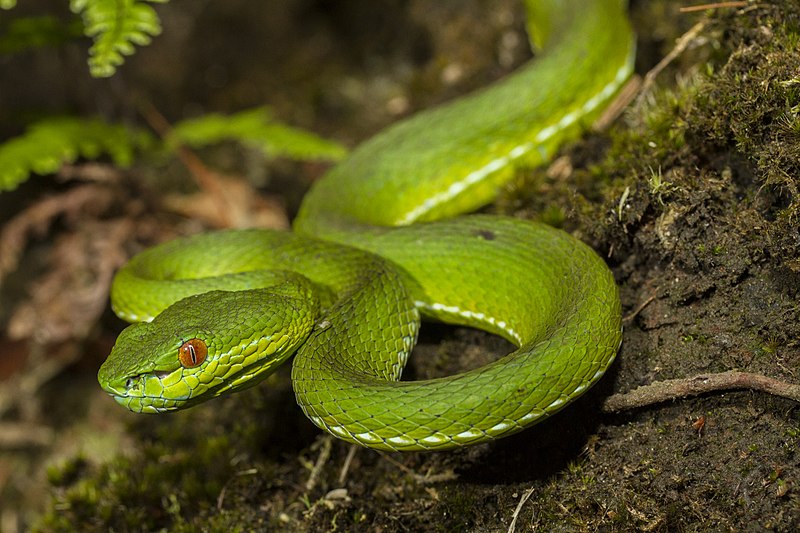
Image via Wikimedia
The Chinese tree viper, sometimes also referred to as a bamboo viper or a Stejneger's pit viper, is among the world’s most venomous species of snakes and is native to Yunnan, Guangdong, Guangxi, Hainan, Fujian and Zhejiang in China, as well as Thailand, Myanmar and Laos.
A bite from this cheeky green snake will unleash a hemotoxin into the body that will leave the victim in excruciating pain and cause tissue and organ damage. Severe, untreated cases can result in death.
In 2017, a man in Guangzhou was bitten by a Chinese tree viper while attempting to adjust the seat on a Bluegogo shared bike. The snake, which was hiding under the bike’s seat, was killed by the bite victim and several others who witnessed the incident. The man was then transported to a local hospital to receive treatment.
READ MORE: Venomous Snake Bites: What to Do When Disaster Strikes
This post originally appeared on Thatsmags.com in June 2015. It was updated and republished on August 3, 2018.
[Top image via Wikimedia]





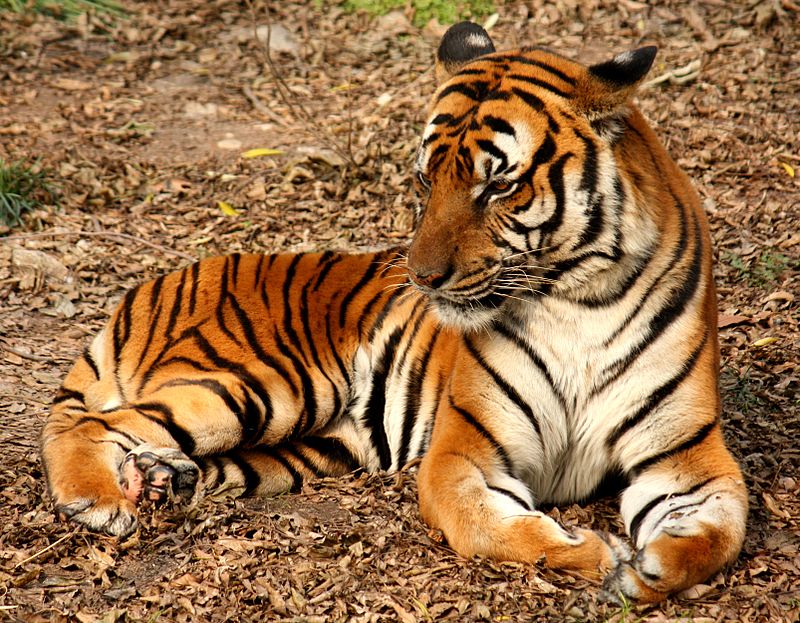
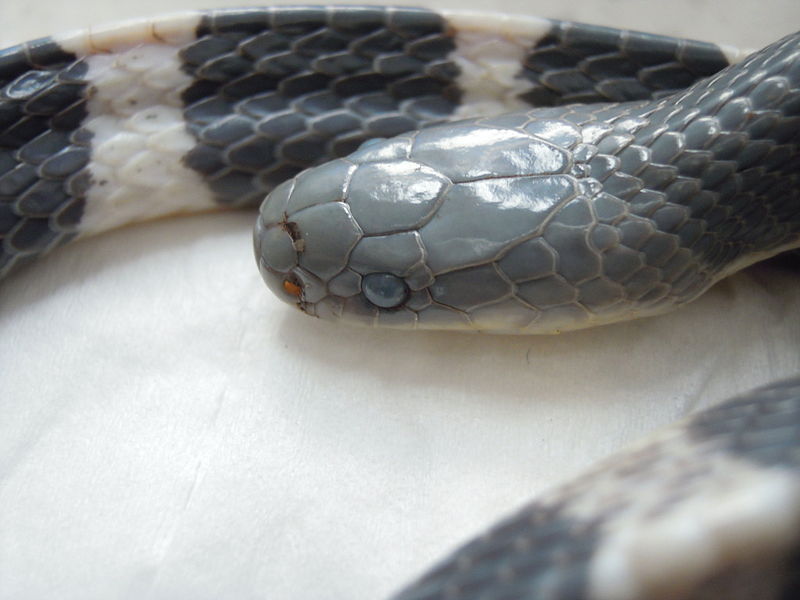

















0 User Comments